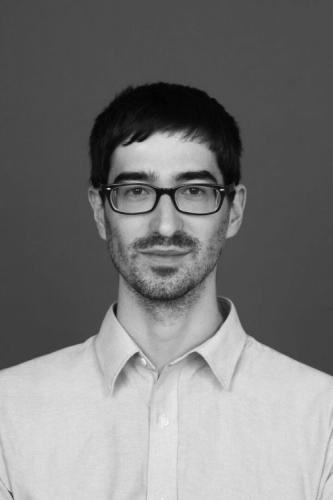
Bryce Maxey (Spanish and Portuguese) has been busy producing scholarly articles. One is already published, and two others are in press.
“De Nicosia a Roma: las ruinas en ‘El amante liberal’ y ‘El licenciado Vidriera’” (From Nicosia to Rome: the Ruins in ‘The Generous Lover’ and ‘The Lawyer of Glass’) appeared in the Spanish journal Cuadernos Hispanoamericanos. Maxey’s essay examines the significance of architectural ruins in two of Miguel de Cervantes’s Exemplary Novels. He argues that scenes in which the protagonists contemplate ruins reveal Cervantes’ familiarity with the poetic traditions of the Renaissance. He also posits that, through a meditation on ruins in “El licenciado Vidriera,” the Spanish novelist anticipates his character’s incipient mental collapse — the belief that his body is made of glass. He also suggests that these episodes reflect the spatial disintegration and narrative fragmentation of each novel. Sterling Professor Roberto González Echevarría edited the issue of the journal and chose Maxey’s essay, which was originally written as a seminar paper. Maxey participated in a round table discussion at the Cervantes Institute in New York City, where he spoke about his article, and the group reflected on the enduring significance of Cervantes 400 years after his death.
Another essay, “Otro Cervantes en Borges: los capítulos invisibles de Pierre Menard” (Another Cervantes in Borges: The Invisible Chapters of Pierre Menard) will be published in Anales de Literatura Hispanoamericana, a Spanish peer-reviewed journal based at the Complutense University of Madrid. This article focuses on Jorge Luis Borges’s (1899-1986) appropriation of Cervantine notions of authorship and narrative mechanisms in one of his most famous short stories.
A third essay is titled “La música detrás de las palabras: Fortunata y Jacinta, ‘Oficio de tinieblas’ y ‘Réquiem por un campesino español’” (The Music Behind the Words: Fortunata and Jacinta, ‘Tenebrae,’ and ‘Requiem for a Spanish Peasant’). Based on a final paper Maxey wrote for a seminar taught by Professor Noël Valis, this article will come out soon in the Bulletin of Spanish Studies, a peer-reviewed journal published by the University of Glasgow. Here, Maxey examines “the interdisciplinary fusion of music and narrative” in a novel by Benito Pérez Galdós (1843-1920), a short story by Alejo Carpentier (1904-1980), and a novel by Ramón J. Sender (1901-1982).
“Both Professor González Echevarría and Professor Valis read and reread drafts of these essays before I submitted them for peer review,” Maxey says. “Getting them published would have been impossible without their support, suggestions, and encouragement.”
Unlike the articles, his dissertation deals with poetry. “I am focusing on the most influential epic poem of the Spanish Golden Age, La Araucana, by Alonso de Ercilla (1533-1594). I provide new readings of each of its three parts and a novel approach to its most famous intercalated episodes,” he explains. The poem portrays a group of Native Americans, the Araucanians, who refused to surrender during the colonial period despite Spain’s military and technological superiority. Because of their fierce opposition, they remained self-governing until their territory was incorporated into Chile in 1882.
“La Araucana occupies a central position in the cultural patrimony of Spain,” he says. “It is also the national poem of Chile — the first work of poetry to describe its history, native people, and geography. Blurring the lines between history and literature, the poem is significant for both Spain and Latin America. The poet not only narrates colonial warfare but, on a deeper level, dramatizes a threefold struggle: his own evolving ideological stance on the conquistadores; his literary struggle to surpass his predecessors and contemporaries; and polemics over historical truth concerning the conquest of Chile. I attempt to reach an overarching interpretation of the work and prove that, behind its frequently criticized digressive structure and seemingly contradictory nature, there is a premeditated plan and a clear rationale. My project intends to provide a deeper understanding of La Araucana and its importance for the Spanish Golden Age.”
Maxey was born in Roanoke, Virginia, and earned his undergraduate degree from the University of Virginia. He then completed a master’s degree in Spanish and Latin American Literature at the University of Buenos Aires. He chose Yale “because of the rigorous preparation provided by the Spanish and Portuguese Department. I also wanted to work with Professor González Echevarría, whose books I had read while writing my master’s thesis. I was further attracted by the possibility of minoring in French literature, one of my undergraduate majors, and by the program’s unique emphasis on language study, which meant achieving proficiency in at least three languages besides English and Spanish. The program’s size appealed to me as well. My entire education, from grade school in Roanoke through graduate studies in Buenos Aires, had been at large, public schools, so I was eager to find out what it would be like to study at a small, private university.”
In his spare time, he likes to exercise in Wooster Square, watch foreign films, and play the piano.
Adapted from Yale Graduate School of Arts and Sciences